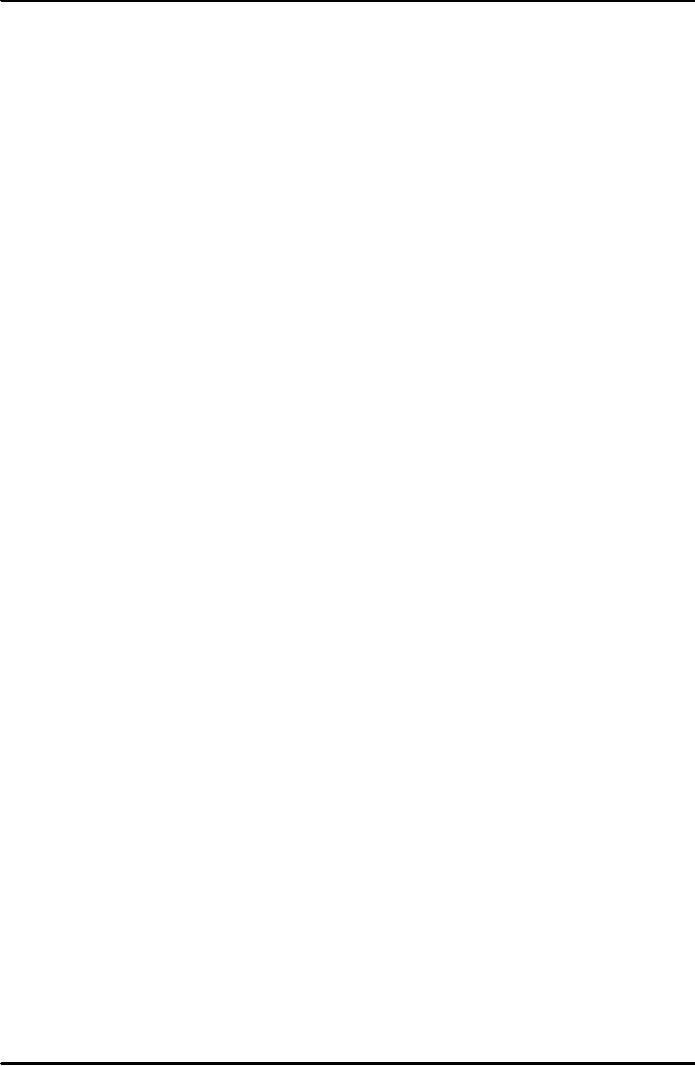 |

Introduction
to Psychology PSY101
VU
Lesson
6
BEHAVIORAL
APPROACH
The
psychological model that focuses on the
overt, observable, behavior.
The model grew out of
the
rejection
of psychology's early emphasis on the
inner working of the mind,
suggesting instead
that
observable
behavior should be the focus of the
field. John B. Watson was the
first person that
advocated
the
behavioral approach. This is a
psychological approach that
considers the relationship between
behavior
and
environmental stimuli as the focus of
study; observable behavior is what
psychology should be
studying,
understanding, and explaining.
This
approach dominated psychology for
most of the 20th century
What
do the Behaviorists
Study?
They
specifically study:
�
Observable/
overt behavior
�
Specific
measurable responses
�
How
particular types of behaviors are
controlled by particular types of
environmental stimuli
Method
of investigation: Data
are typically collected under
controlled laboratory conditions,
employing
technological
assistance
What
the Behaviorists Are Not
Interested in:
They
are not interested
in:
�
Unconscious
�
Inner
motivation
�
Biochemical
processes
�
These
and all other states,
which are not being observed
with the naked eye or cannot
be
evaluated.
Behaviorist
Analysis
Behaviorist
Analysis is done for seeing
and establishing the
relationship between the
stimulus and
response/
behavior.
Three
step approach
�
The
antecedent environmental conditions: are
analyzed. i.e., the conditions
preceding the
action/
response/ behavior, and that
lay a ground for
it.
�
The
behavioral response is studied:
study
of the action or behavior that is to be
understood,
described,
predicted, and controlled.
�
Observable
consequences are explored: the
impact resulting from the
target behavior i.e.
how
it affects the environment or
other people.
Basic
Terminology
�
Stimulus:
A
physical energy source that
has an effect on a sense organ,
thus producing a
response.
�
Response:
The
action, behavior, or reaction triggered by a
stimulus.
�
Environment:
External
factors, variables, conditions,
influences, or circumstance affecting
one's
development
or behavior.
�
Variable:
A
behavior, factor, setting, or event
that can change / vary in amount or
kind.
�
Learning:
A relatively
permanent change in behavior
that takes place as a result
of practice and/
or
experience.
35

Introduction
to Psychology PSY101
VU
Edwin
L.Thorndike: (1874-
1949)
Edwin
L.Thorndike, was an American
psychologist, who's thinking is
thoroughly associationistic.
He
was a functionalist in his emphasis on
the utilitarian aspect of
psychology. According to him,
psychology
is about the stimulus-
response connections. He was of the
view that behavior can
be
analyzed
into associations. He said
that the behavioral
processes are quantifiable.
Believed that
behavior
was explicable on the basis of
nothing but stimulus-
response connections inherited
and
acquired.
Initial
work: in1898
(published dissertation) studied
problem solving in animals.
Tried to analyze the
conditions
under which animals
learn.
Focus
of the study: the
relationship between the
animals' response and their
consequences.
Main
finding: The
consequence of any response
determines if the response will be
repeated in future or
not:
"The
Law of Effect"
The
Law of Effect: Any
response that leads to an
outcome that is satisfying
for the organism is likely
to
be
repeated; a response leading to an
outcome that is not
satisfying is not likely to be
repeated
Association
by Contiguity
�
The
organism forms an association or
connection between the
response and its
consequences.
For it to be effective, the
response and the outcome
have to be closely
linked
-- both in time and
space
�
The
theory drew attention
towards the significance of
reward and punishment
in
learning
new behaviors
Criticism
against Thorndike's
Approach
It
was not clear about what
exactly `Satisfying'
meant.
Early
Behaviorism
John.B.Watson:
(1878- 1958): The
founder of the behavioristic school of
thought.
�
American
psychologist with a remarkable
career.
�
Initially
trained in introspection at the
University of Chicago but
found it extremely vague and
mentalistic.
�
He
became interested in experimental research
with animals.
�
He
completed his Ph.D. on that
in three years, being the youngest
such graduate.
�
Taught
at the University of Chicago for
four years, joined John
Hopkins as full professor
and
soon
became chairperson of the psychology
department.
�
Gave a
revolutionary, pragmatic approach
often known as `Radical
Behaviorism'.
�
He
and his followers believed
and advocated that
psychology should depart from the
study of
unconscious
and the mind because they could
not be verified or tested
scientifically.
�
Observable
behavior is all that
psychology should be looking
at.
�
Environment
and external world (environmental
stimuli) is what shapes and
determines
behavior.
�
Learning is
what matters in what a person is,
and not the inborn
instincts, impulses, drive,
id,
or
unconscious motivation. An understanding of learning
will encompass all aspects
of
personality.
�
Mentalist
concepts, not grounded in reality, should
be rejected.
Impact
of Learning Experience
"Give
me a dozen healthy infants,
well formed, and my own
specified world to bring
them up in, and
I'll
guarantee to take any one at
random and train him to
become any type of
specialist I might select
-
36

Introduction
to Psychology PSY101
VU
-
doctor, lawyer, artist,
merchant-chief, and yes,
even beggar-man and thief,
regardless of his
talents,
penchants,
tendencies, abilities, vocations
and race of his ancestors".
(Watson,
1924)
Learned
Fear: The Case of "Little
Albert"
1920:
Developing Fear; Watson and
Rosalie Rayne Eleven month
old Albert who enjoyed
playing
with
a cute white rat was made
afraid of it by linking a loud
frightening sound with the
appearance
of
the rat. The experiment was
further expanded and Watson
and Rayner demonstrated that
the
fear
of the rat could be
generalized to all sorts of
stimuli: a dog, a cotton
ball and a Santa
Clause.
Watson
and Rayner could not
get a chance to undo the
learning as the child's
mother removed
him
from
the hospital.
Issues
stemming from Little
Albert's Experiment
�
Unethical
treatment of Albert, that too
without the advised consent
of his mother.
�
Watson
contradicted his own earlier
assertion that early childhood
emotional
experiences
can affect a person for a
lifetime.
Classical
Conditioning
Why
are children scared of
darkness?
Why
some children jump with
joy at the sight of a bear
and some start screaming in
fright?
Why
does one coming from
abroad start feeling happy
at the very sight of his
parents' home?
Why
does one start feeling
bad at the thought of going
to a dentist?
The
answers to all these
questions can be found in
the classical conditioning
approach
Classical
Conditioning: The
History
�
Ivan
Pavlov 1849-1936: Russian
physiologist and pioneer of
classical conditioning.
�
In
the later years of the
19th century studied the
basic process of digestion
and won
Nobel
Prize for
that in 1904.
�
The
focal point was the
salivation reflex in
dogs.
�
It
was already known that the
dogs would salivate if food
powder were led into their
mouths,
as
it was a `reflex'.
�
The
dogs salivated every time
the food powder was
presented.
�
He
observed that after some time, the
dogs at times salivated just
before food was put
into
their
mouths. They also salivated at the
sight of the food, and even
at the sight of the lab
assistant
who brought food for
them.
�
This
is where the concept of
classical conditioning emerged.
Classical
Conditioning: The
Theory
Is
a type of learning in which a
previously neutral stimulus
starts eliciting a response
that
was
originally attached to a natural
stimulus, because the
neutral stimulus has been
closely
associated
with the other
stimulus.
Basic
Terminology in Classical
Conditioning
�
Reflex
37

Introduction
to Psychology PSY101
VU
An
automatic, unlearned response
resulting from a specific
stimulus.
�
Un-Conditioned
Stimulus (UCS)
A
stimulus that elicits a
response reflexively and
reliably.
�
Un-Conditioned
Response (UCR)
A
natural, reflexive, reliable,
response of the
UCS.
�
Conditioned
Stimulus (CS)
A
primarily neutral stimulus
which, when paired with
the UCS, starts evoking a
response
(different
from its natural response)
and the same as
UCR.
�
Conditioned
Response (CR)
After
conditioning, the CS begins to
elicit a new, learned
response. i.e. CR.
Pavlovian
Classical Conditioning
The
following diagram explains the
classical conditioning model:
Before
Conditioning
Neutral
Stimulus
(Orientation
to sound
(tone)
but
no response)
UCS
UCR
(food
power in mouth)
(salivation)
During
Conditioning
Neutral
Stimulus
(tone)
CS
CR
+
(salivation)
UCS
(food
power)
After
Conditioning
CS
CR
(tone)
(salivation)
Little
Albert's Case
Before
Conditioning
Neutral
Stimulus
(Liking)
(Rat)
UCS
UCR
(Loud
noise)
(Fear)
During
Conditioning
Neutral
Stimulus
(Rat)
CS
CR
+
(Fear
)
UCS
(Loud
noise)
After
Conditioning
CS
CR
(Rat)
(Fear)
38

Introduction
to Psychology PSY101
VU
Extensions
of the Main Classical Conditioning
Model
There
are a number of other variations and
extensions of this model, which will be
discussed in detail in the
section
on learning. Here, we will just name
them:
�
Extinction
�
Spontaneous
recovery
�
Stimulus
generalization
�
Stimulus
discrimination
Applications
of Classical Conditioning in Everyday
Life
�
Negative
emotional responses: fears,
phobias-----fear of lizards, dark
places, school phobia
�
Positive
emotional responses: Feelings
of relaxation, and happiness
--- thinking of going on
a
holiday
�
Advertising:
Associating
model with the
product
�
Psychotherapy:
Systematic
desensitization, aversive
therapy
Operant
Conditioning
�
Why
do teachers give stars on children's
workbooks?
�
Why
do parents clap happily when
their child utters the first
words that nobody else
can
decipher?
�
Why do
manufacturers of products announce prize
schemes for the consumers of
their
products?
The
answers to all these
questions can be found in the
"Operant Conditioning"
approach.
Operant
Conditioning
�
Type
of learning in which a voluntary
response becomes stronger or
weaker, depending
on
its positive or negative
consequences
�
The
organism plays an active
role and "Operates"
on
environment to produce the
desired
outcome
Burrhus
Frederic Skinner (1904-1990)
�
American
Psychologist and the founder
of Operant Conditioning.
�
1931:
Received
his Ph.D.
from
Harvard.
�
During
World War II, he conducted
research on teaching pigeons to direct
missiles to
targets
while flying in nose- cone.
However the idea did not
materialize.
�
1947:
Went back to Harvard to
deliver `William James'
lectures.
�
1948:
Appointed as full professor at
Harvard.
�
While
a graduate student at Harvard he
started thinking on Operant
Conditioning
lines.
�
His
theory is somewhat similar to Thorndike's,
but it was actually Watson
who
impressed
him.
The
Typical Skinnerian procedure
�
A
special apparatus usually known as
skinner's box is used.
�
Laboratory
animals learn to press a
lever so that food is
delivered to them.
�
The
environment is controlled.
�
The
animal operates on the
environment and as a result of its
behavior it may be
rewarded
or punished. Food is the
reward
�
The
consequence determines if the
response will be repeated or
not.
39

Introduction
to Psychology PSY101
VU
Shaping:
Successive
approximations of a required / desired
response are reinforced
until that
response
is fully learnt:
�
In
the beginning each and every
success is reinforced with a reward, no
matter how small the
success.
�
Once
the desired response is learnt the rein
forcer immediately follows it,
every time it
happens.
�
Once
learnt the behavior, in many cases, the
organism may not need
reinforcement any more,
since
many behaviors are self-reinforcing
e.g. learning to play a musical
instrument.
Acquisition:
Initially
the response rate following reinforcement
may be slow but at one
stage it increases to
the
maximum. This is acquisition.
Extinction:
If reinforcement is
withheld the response rate
decreases and finally no
response is shown.
This
is
extinction.
Reinforcement
4.
Reinforcement: Increasing
the probability that preceding
behavior will be repeated
through a
stimulus.
5.
Positive Rein forcer: A
stimulus whose introduction
brings about an increase in the
preceding
response.
6.
Negative Rein forcer: A
stimulus whose removal reinforces
and leads to a higher likelihood
that
the
response bringing about this removal
will be repeated.
7.
Punishment: An
unpleasant or painful stimulus
whose introduction following a
certain behavior
decreases
likelihood that the behavior
will occur again.
Applications
of Operant Conditioning in Everyday
Life
�
Child
rearing
�
Classroom
management
�
Teaching
of skills
�
Animal
taming
�
Advertising
�
Psychological
intervention and Psycho-
therapy: behavior modification,
assertiveness
training,
token economy
Cognitive
Approaches to Learning
The
approaches that focus upon
the thought processes underlying
learning. Latent Learning and
cognitive
maps
(Edward Tolman); Tolman talked about the `cognitive
maps'; it is not necessary to
have an association
between
stimulus and response, a
person can learn without
showing any apparent response; in
other words
learning
and performance are not the
same
Social
learning / Observational learning and Modeling
(Albert Bandura): a major portion of
our learning is
based
upon learning by observation.
40
Table of Contents:
- WHAT IS PSYCHOLOGY?:Theoretical perspectives of psychology
- HISTORICAL ROOTS OF MODERN PSYCHOLOGY:HIPPOCRATES, PLATO
- SCHOOLS OF THOUGHT:Biological Approach, Psychodynamic Approach
- PERSPECTIVE/MODEL/APPROACH:Narcosis, Chemotherapy
- THE PSYCHODYNAMIC APPROACH/ MODEL:Psychic Determinism, Preconscious
- BEHAVIORAL APPROACH:Behaviorist Analysis, Basic Terminology, Basic Terminology
- THE HUMANISTIC APPROACH AND THE COGNITIVE APPROACH:Rogers’ Approach
- RESEARCH METHODS IN PSYCHOLOGY (I):Scientific Nature of Psychology
- RESEARCH METHODS IN PSYCHOLOGY (II):Experimental Research
- PHYSICAL DEVELOPMENT AND NATURE NURTURE ISSUE:Nature versus Nurture
- COGNITIVE DEVELOPMENT:Socio- Cultural Factor, The Individual and the Group
- NERVOUS SYSTEM (1):Biological Bases of Behavior, Terminal Buttons
- NERVOUS SYSTEM (2):Membranes of the Brain, Association Areas, Spinal Cord
- ENDOCRINE SYSTEM:Pineal Gland, Pituitary Gland, Dwarfism
- SENSATION:The Human Eye, Cornea, Sclera, Pupil, Iris, Lens
- HEARING (AUDITION) AND BALANCE:The Outer Ear, Auditory Canal
- PERCEPTION I:Max Wertheimer, Figure and Ground, Law of Closure
- PERCEPTION II:Depth Perception, Relative Height, Linear Perspective
- ALTERED STATES OF CONSCIOUSNESS:Electroencephalogram, Hypnosis
- LEARNING:Motor Learning, Problem Solving, Basic Terminology, Conditioning
- OPERANT CONDITIONING:Negative Rein forcer, Punishment, No reinforcement
- COGNITIVE APPROACH:Approach to Learning, Observational Learning
- MEMORY I:Functions of Memory, Encoding and Recoding, Retrieval
- MEMORY II:Long-Term Memory, Declarative Memory, Procedural Memory
- MEMORY III:Memory Disorders/Dysfunctions, Amnesia, Dementia
- SECONDARY/ LEARNT/ PSYCHOLOGICAL MOTIVES:Curiosity, Need for affiliation
- EMOTIONS I:Defining Emotions, Behavioral component, Cognitive component
- EMOTIONS II:Respiratory Changes, Pupillometrics, Glandular Responses
- COGNITION AND THINKING:Cognitive Psychology, Mental Images, Concepts
- THINKING, REASONING, PROBLEM- SOLVING AND CREATIVITY:Mental shortcuts
- PERSONALITY I:Definition of Personality, Theories of Personality
- PERSONALITY II:Surface traits, Source Traits, For learning theorists, Albert Bandura
- PERSONALITY III:Assessment of Personality, Interview, Behavioral Assessment
- INTELLIGENCE:The History of Measurement of Intelligence, Later Revisions
- PSYCHOPATHOLOGY:Plato, Aristotle, Asclepiades, In The Middle Ages
- ABNORMAL BEHAVIOR I:Medical Perspective, Psychodynamic Perspective
- ABNORMAL BEHAVIOR II:Hypochondriasis, Conversion Disorders, Causes include
- PSYCHOTHERAPY I:Psychotherapeutic Orientations, Clinical Psychologists
- PSYCHOTHERAPY II:Behavior Modification, Shaping, Humanistic Therapies
- POPULAR AREAS OF PSYCHOLOGY:ABC MODEL, Factors affecting attitude change
- HEALTH PSYCHOLOGY:Understanding Health, Observational Learning
- INDUSTRIAL/ORGANIZATIONAL PSYCHOLOGY:‘Hard’ Criteria and ‘Soft’ Criteria
- CONSUMER PSYCHOLOGY:Focus of Interest, Consumer Psychologist
- SPORT PSYCHOLOGY:Some Research Findings, Arousal level
- FORENSIC PSYCHOLOGY:Origin and History of Forensic Psychology